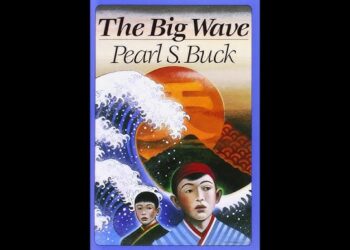Introduction to And Then There Were None by Agatha Christie
And Then There Were None Summary By Agatha Christie And Then There Were None, published in 1939, is widely regarded as one of Agatha Christie’s greatest literary achievements and is often cited as the best-selling mystery novel of all time. It was originally titled Ten Little Niggers, which was later changed to And Then There Were None to reflect modern sensibilities and avoid racial overtones.
This chilling, closed-room mystery (or rather, an isolated island mystery) is a departure from Christie’s more famous detective stories starring Hercule Poirot or Miss Marple. It stands alone as a masterclass in suspense, manipulation, and psychological terror.And Then There Were None Summary By Agatha Christie
The novel revolves around ten seemingly unconnected individuals who are invited to an isolated island, each with a different invitation or reason for visiting. As the guests settle in and begin to get to know one another, they realize that they have been lured to the island by an anonymous host, who accuses them all of past crimes, and begins executing them in a manner that follows a morbid nursery rhyme. The tension rises as each guest’s fate unfolds, and one by one, they meet their end, leaving the survivors to desperately figure out who among them is responsible for the murders.
Set against the backdrop of post-World War I Britain, And Then There Were None touches on profound themes of justice, guilt, punishment, and human morality. Its intricate plotting, innovative structure, and psychological depth have made it a classic of the mystery genre, as well as a disturbing meditation on human nature and moral retribution.And Then There Were None Summary By Agatha Christie
The novel has been adapted numerous times for film, television, stage, and radio, solidifying its place as one of the most enduring works of detective fiction.And Then There Were None Summary By Agatha Christie
Summary of And Then There Were None
The Premise: A Group of Strangers on an Isolated Island
The novel opens with ten strangers—eight men and two women—receiving mysterious invitations to Soldier Island, a secluded estate off the coast of Devon, England. The characters are a mix of seemingly ordinary individuals from different walks of life: a retired judge, a governess, a general, a doctor, a soldier, a servant couple, and others.
Each person arrives at the island under different pretexts: some are hired for jobs, others invited by old acquaintances, while a few are simply intrigued by the mysterious nature of the summons.And Then There Were None Summary By Agatha Christie
Upon arrival, they discover that their host, “U.N. Owen” (pronounced “Unknown”), has not yet arrived. The island is completely cut off from the mainland, and the guests are left alone in the sprawling estate. After dinner, the guests listen to a gramophone recording in which each person is accused of a specific crime from their past—wrongs that have gone unpunished. The accusations are shocking, revealing the dark secrets of each individual: a drowning death, a wrongful conviction, an accidental killing, and more.
The guests, shocked and confused, attempt to explain or deny the accusations, but the realization begins to dawn that they have been lured to the island for a reason. “U.N. Owen” seems to be a judge of sorts, meting out judgment for crimes that the law has failed to address.

The Murders Begin: The Pattern Emerges
The next day, the first murder occurs. Anthony Marston, a handsome and reckless young man, dies after drinking a poisoned glass of whiskey. His death is the first in a series of killings that follow the verses of a nursery rhyme called “Ten Little Soldiers.” Each verse details the fate of a soldier, one by one, until there are none left. The rhyme becomes a chilling prophecy, guiding the murders in such a way that they correspond with the verse’s predictions.And Then There Were None Summary By Agatha Christie
The characters quickly realize that they are being systematically killed, each death mirroring a line of the nursery rhyme. As the guests begin to panic and argue, it becomes apparent that the killer must be one of them. However, no one can figure out how the deaths are being carried out or who is responsible.
The sequence of murders continues, each more ingenious and increasingly ominous. Mrs. Rogers, one of the servants, dies in her sleep from an apparent overdose of sleeping pills. General MacArthur is struck in the head while sitting alone on the beach. Thomas Rogers, the other servant, is killed with an axe while chopping wood. Emily Brent, an uptight woman who prides herself on her moral righteousness, dies from an injection of poison.And Then There Were None Summary By Agatha Christie
As the murders unfold, the remaining guests begin to suspect one another. Tensions run high, and paranoia mounts. The guests grow more desperate, realizing that the killer is hiding in plain sight and that the law cannot reach them. The isolation of the island adds to the sense of helplessness, and the characters are left to wrestle with their fear, guilt, and increasingly irrational behavior.
Read more
The bodies continue to fall in accordance with the rhyme, and the final survivors—Vera Claythorne, Philip Lombard, and William Blore—are forced to confront their own sins. Vera, a former governess who was responsible for the drowning death of a child, eventually kills Lombard in a fit of panic, believing that he is the murderer. She then takes her own life, driven by overwhelming guilt and the fear that the killer will never stop.
The Final Revelation: Justice Wargrave’s Plan Unfolds
In the final pages, the reader learns that the killer was Justice Lawrence Wargrave, a retired judge. Wargrave orchestrated the entire sequence of murders, creating an elaborate plan to exact vengeance on those he believed had escaped justice. Each death was carefully calculated, designed to mirror the rhyme’s progression. He had hoped to create a situation where his actions would be seen as a form of moral retribution, punishing those who had gotten away with crimes in the past.
Wargrave’s meticulous planning includes faking his own death to throw off suspicion. He stages a scene where he appears to be shot in the head, only to later reveal that he had actually killed the others in a calculated sequence. His confession is revealed in a posthumous letter, which explains the motives behind the murders and reveals how he had anticipated every step of the plot.
In his final letter, Wargrave justifies his actions as a form of divine justice, claiming that he was simply carrying out the punishments that the law had failed to deliver. His cold, calculating mind and sense of superiority to the others make him one of the most chilling villains in Christie’s body of work.
Themes in And Then There Were None
- Justice and Moral Retribution
A central theme in the novel is the concept of justice, particularly the idea of taking justice into one’s own hands. Each character on Soldier Island has committed a crime that the legal system has failed to punish, and Wargrave, the murderer, believes that he is serving as an instrument of divine retribution. The novel explores the complexities of guilt, punishment, and the morality of vengeance. Through the characters’ actions and Wargrave’s final confession, Christie raises the question of whether anyone truly has the right to execute judgment on others.And Then There Were None Summary By Agatha Christie
Read more
- Guilt and Accountability
Every character in And Then There Were None is guilty of something, and the novel repeatedly asks whether anyone can truly escape the consequences of their actions. Some characters are more remorseful than others, but none of them is innocent. Christie suggests that guilt is something inescapable, no matter how well one hides it or tries to move past it. The deaths that occur on the island are not just physical; they are a form of psychological reckoning, forcing each person to confront their past.And Then There Were None Summary By Agatha Christie - Isolation and Paranoia
The setting of the novel—the isolated island—creates an atmosphere of paranoia and dread. As the guests begin to die, the realization sets in that there is no escape, no way for help to arrive, and no way to trust anyone. This isolation amplifies the psychological tension, forcing the characters to turn on each other. The novel explores how isolation can warp the mind and push individuals to make irrational, even violent, decisions.And Then There Were None Summary By Agatha Christie - Human Nature and Morality
Christie examines human nature through her characters’ reactions to the killings. Some are quick to suspect others, while some attempt to rationalize or deny their involvement in the crimes. The novel exposes the fragility of human morality when faced with fear and desperation. What begins as a group of ordinary people quickly devolves into a struggle for survival, with each character revealing darker aspects of their nature as the story unfolds. - Fate and Inevitability
The nursery rhyme acts as a metaphor for fate in the novel. Each death is predetermined, following the rhyme’s progression with chilling precision. This sense of inevitability permeates the story, as the characters slowly realize that their deaths are not random but part of a carefully laid plan. The theme of fate is central to the story’s atmosphere of doom and helplessness, as the characters can do little to alter the course of events.And Then There Were None Summary By Agatha Christie

- The Reliability of the Narrator and Unreliable Perspectives
Christie plays with the concept of narrative reliability throughout the novel. The story is told through a third-person omniscient point of view, but this perspective becomes unreliable as suspicion grows and each character’s viewpoint becomes more distorted by fear. Wargrave’s final confession, revealing his orchestration of the murders, challenges everything the reader has previously believed to be true.And Then There Were None Summary By Agatha Christie
Read more
(FAQ)
1. What is the significance of the nursery rhyme “Ten Little Soldiers”?
The nursery rhyme is integral to the plot structure of And Then There Were None. It dictates the sequence of murders, with each character’s death corresponding to a verse. The rhyme creates a sense of inevitability, as the guests realize that they are dying in the order foretold. It also enhances the eerie atmosphere of the novel, with each death serving as a literal manifestation of the rhyme’s grim prophecy.
2. Who is the murderer in And Then There Were None?
The murderer is Justice Lawrence Wargrave, a retired judge who orchestrates the deaths of the other characters as a form of moral retribution for their past crimes. Wargrave plans the murders meticulously, ensuring that each death occurs according to the rhyme and that no one can escape. He justifies his actions as a way of delivering justice where the law has failed.
3. Why does Vera Claythorne kill herself at the end of the novel?
Vera’s suicide is the result of overwhelming guilt and fear. She is one of the last survivors, and after killing Philip Lombard in a fit of panic, she becomes convinced that she is trapped in a cycle of death and justice that she cannot escape. Her own moral failings—the drowning death of a child she once cared for—haunt her, and in her despair, she chooses to take her own life, completing the rhyme’s final verse.
4. What makes And Then There Were None a unique Agatha Christie novel?
Unlike most of Christie’s other works, which feature recurring detectives like Hercule Poirot and Miss Marple, And Then There Were None is a self-contained mystery. There is no investigator to solve the case, and the story focuses entirely on the psychological and moral drama of the characters. This creates a more intense, suspenseful atmosphere, as readers are forced to confront the mystery without the guidance of a traditional detective figure.
5. How does the theme of guilt manifest in the characters?
Each character in And Then There Were None is revealed to have a past transgression for which they have never been held accountable. Some feel deep guilt and remorse for their actions, while others justify or deny their involvement. The murders themselves serve as a way for the characters to confront their pasts, and the novel suggests that guilt is an inescapable force that ultimately leads to their demise.
6. What does the novel say about justice and punishment?
The novel explores the idea of justice, particularly the concept of personal or vigilante justice. Wargrave takes it upon himself to deliver punishment to those he believes have escaped the law. His actions raise questions about the morality of retribution and whether it is ever acceptable for someone to take justice into their own hands. The novel ultimately suggests that true justice is complex and cannot be carried out in isolation, with no due process or opportunity for defense.
Read more

















